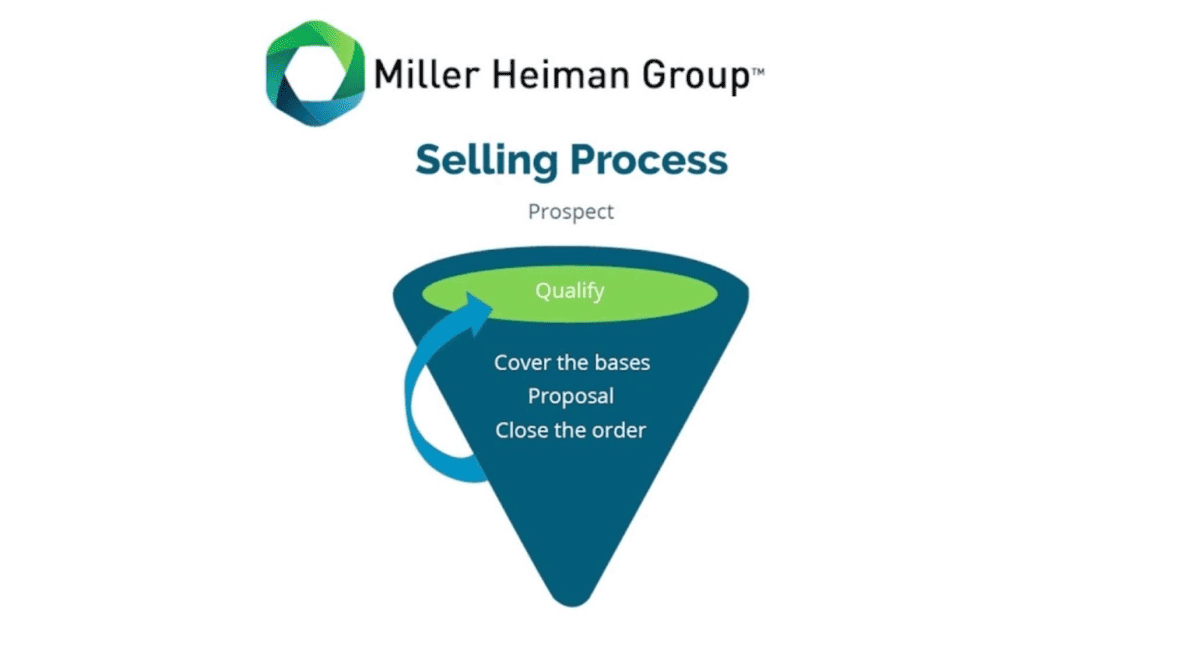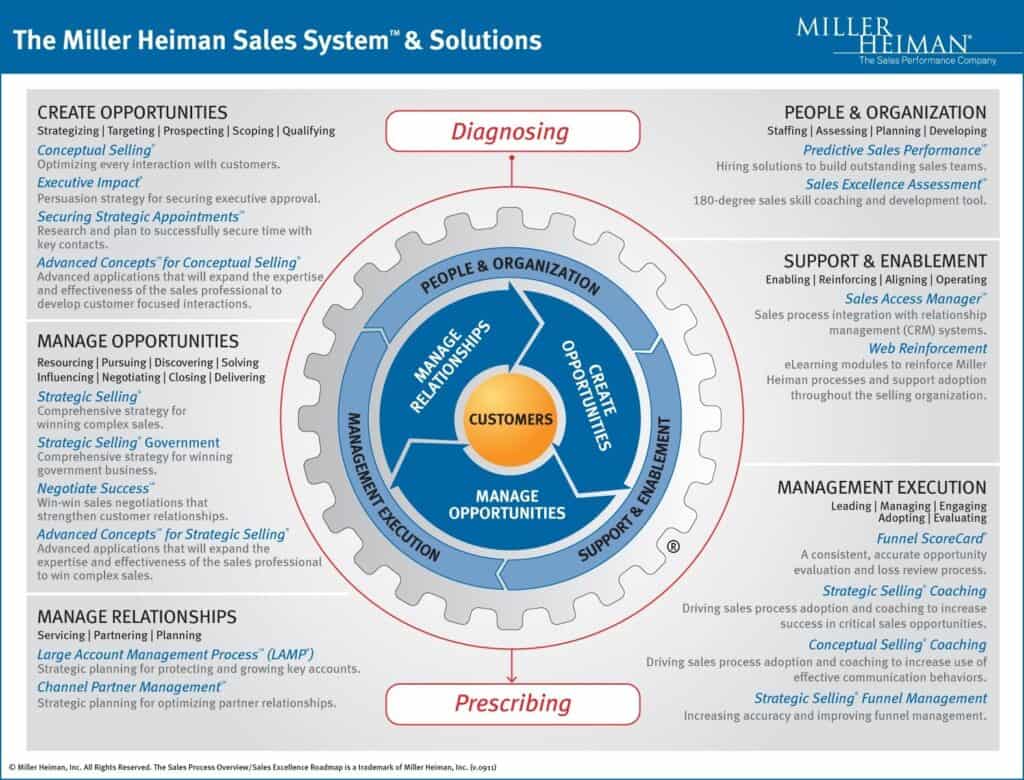Do you use the same sales strategy to sell across all customers? Chances are it may not have worked.
Since every consumer is different, sales teams cannot implement the same strategy to sell each one of them.
Although having frameworks to build and customize from is a great way to save time and standardize your marketing efforts, depending solely on generic templates will only get you so far.
So how do you create a successful sales pitch?
With strategic selling, sales teams can market their products to different groups of consumers effectively and develop mutually beneficial relationships with their clients.
Let us dig deeper to understand what strategic selling is and why it is important for your business.
Table of Contents
What Is Strategic Selling?

Developed by Robert Miller and Stephen Heiman, strategic selling is a sales framework that focuses on building relationships with various decision-makers and stakeholders rather than just a single contact.
Also known as the Miller Heiman process, strategic selling involves identifying all the key members of the decision-making process and evaluating their position in terms of purchasing so as to tailor the pitch or sales approach accordingly.
Strategic selling was primarily designed for managing B2B sales, and its basic goal is to provide sellers with enough information to undertake the right decisions regarding sales opportunities.
It is based on the win-win principle, i.e., sellers seal deals with the aim of helping buyers solve problems and earn higher ROI.
Using strategic selling, sales teams can determine when to go after deals, which deals to focus on, and when to walk away from those with a low probability of success.
In simple terms, the sales model includes categorizing the different roles within a client’s company according to their influence on the purchase.
Once that is done, it involves determining the level of support for the deal from each stakeholder, and using the information to finalize the deal.
In addition, as a salesperson, you need to identify the problem that exists and how your product or service can solve it.
Read also: A Guide to SPIN Selling: Definition, Tips, and Best Practices
Elements of Strategic Selling

Here are the components that make up for strategic selling.
#1. Decision-makers
The most important element of any strategic selling model is its decision-makers.
Once you have identified its decision-makers or stakeholders, you can determine to whom to sell your product.
The key to a successful sale lies in the hands of the stakeholders, as they are usually the ones who announce a budget and decide which deals to close.
In large companies, decision-makers are usually the Chief Information Officer (CIO) or the Chief Technology Officer (CTO).
On the other hand, in small and medium-sized businesses, decision-making usually lies with the CEO and founders.
#2. Product users
Users want to know how a product or service will benefit them.
They want to know whether the product or service will be able to solve their problem or not, and, therefore, are directly influenced by the purchase.
As a salesperson, it is important to clearly explain how your company’s product or service will help users perform their jobs better.
Read also: 6 Ways To Make Practically Every Sales Call Close
#3. Guardians
Guardians are people who are considered the gatekeepers or technical buyers of a product.
They are usually responsible for analyzing the various buying options, differentiating them on the basis of technical features and customer reviews, and making recommendations accordingly.
Although they don’t have the final say, guardians can help influence decision-makers on product purchases.

#4. Coaches
The role of a coach is to guide sales teams and decision-makers during the selling process.
Coaches can help salespersons initiate new contacts and provide insider information on prospective clients.
Further, coaches help with identifying the purchase influencers or stakeholders for every deal, analyzing their problems and motivations, and creating a tailor-made pitch to close deals.
Read also: How Sales Call Recording Helps Build an Effective Sales Team
Techniques Involved in Strategic Selling

Broadly, there are four techniques involved in strategic selling – personal selling, after-sales service, maintaining contacts, and low pricing strategy.
Let us look at each of them.
#1. Personal selling
Personal selling is a technique that helps sales teams nurture relationships with clients.
The relationship aims to encourage the customer to make a purchase by identifying their problems and understanding their buying preferences.
In addition, sellers highlight the key features of the products, address any questions or concerns raised by buyers, and demonstrate how to use them.
The aim of personal selling is not only to develop strong and long-lasting relationships with clients but to enable the latter to make a purchase without feeling pressured.
Read also: 7 Tips For Turning Prospective Clients Into Paying Customers
#2. After-sales service
After-sales service refers to the additional assistance provided by salespersons to buyers after they have made a purchase.
It is a crucial strategic selling tactic, as it shows that the brand cares for its customers and is available to resolve their grievances even after they have bought the product.
Examples of after-sales services include home delivery of goods, installation of items, repair and maintenance, and warranty services.
Read also: The 10 Best Sales Podcasts You Need to Listen To
#3. Maintaining contacts
Another strategic selling technique that helps businesses nurture client relationships is maintaining contacts.
It involves following up with buyers, either through calls or visits, to understand whether the product is working properly or not, what features impressed them the most, and any improvements they would like to see in the future.
The technique also includes keeping buyers informed about any newly launched products relevant to them or any latest developments on the product purchased.

#4. Low pricing strategy
Low pricing is a strategic selling technique that aims at attracting prospective customers when introducing new products or seeking a competitive edge in markets.
It helps bring a change in sales volumes and increase the number of purchases with downward price adjustments.
Read also: Sales Analysis: Learn To Zoom In & Master the Pipeline
Advantages of Strategic Selling
Strategic selling benefits sellers in many ways. Below is a list of why you should use strategic selling tactics in your organization.
#1. Simplifies complex sales
A single sales template cannot be used to sell products to all consumers.
Using strategic selling techniques, companies can create a clear and structured framework that helps sales teams identify key stakeholders, search for opportunities, and offer the right after-sales services to nurture client relationships.
Moreover, strategic selling also helps reps create sales pitches that are tailored to the needs of customers.
#2. Build a consistent team approach
Since strategic selling helps build a structured framework for sales teams, it helps them assess the quality of deals early on and deliver consistent results.
Using strategic selling, reps can easily identify which deals are likely to convert, helping them eliminate those with a low probability of success and directing resources only to those that will be successful.
Read also: What Are Capital Goods? Definition, Importance, and Examples
#3. Forecast revenue more accurately
With a greater level of qualification and deal analysis throughout the sales process, strategic selling helps sales managers forecast revenue more accurately, even with high-ticket and complex opportunities.
It helps them differentiate between successful and unsuccessful sales deals, which enables sales reps to determine the revenue they can expect to earn over a given period.
#4. Quickly onboard new reps
Strategic selling creates a structured process for sales, which helps easily onboard and train newly hired sales team members.
The new reps can refer to the existing sales framework to differentiate between good and bad deals, identify new opportunities, and persuade customers to make a purchase.
Read also: 8 SMART Sales Goals for Business Growth [+ Case Study]
Wrap Up
Strategic selling is one of the best ways to tailor your sales pitch for marketing products to prospective clients.
It helps identify the problems customers face and how your product or service can solve them.
Further, strategic selling includes various after-sales service tactics to help reps build long-lasting relationships with customers.
Businesses can use CRM platforms like EngageBay to improve their strategic selling techniques.
EngageBay is an all-in-one marketing, sales, and service platform, designed for small and medium-scale enterprises.
A sales manager can get a holistic view of their customer profile, with the help of which they can identify and qualify leads, schedule appointments, and keep easy track of their pipelines.


